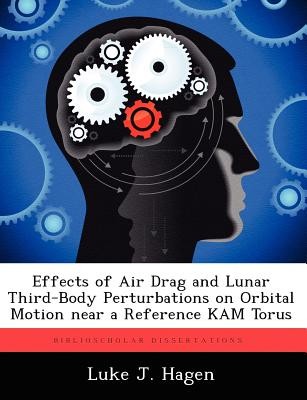
- We will send in 10–14 business days.
- Author: Luke J Hagen
- Publisher: BiblioScholar
- ISBN-10: 1249591791
- ISBN-13: 9781249591795
- Format: 18.9 x 24.6 x 0.6 cm, softcover
- Language: English
- SAVE -10% with code: EXTRA
Effects of Air Drag and Lunar Third-Body Perturbations on Orbital Motion Near a Reference Kam Torus (e-book) (used book) | bookbook.eu
Reviews
Description
The KAM Theory was developed in the 1960s but only in the last decade has it been applied to Earth orbiting satellites. Physical state variables of position and velocity are transformed into KAM Torus variables. The KAM Torus is a geometrical structure similar to that of a multi-dimensional donut. The Earth satellite's motion can be described as traversing the surface of this donut. There are two primary advantages of this transformation: (1) The new generalized coordinates which are analogous with mean anomaly, right ascension of the ascending node, and argument of perigee, increment linearly with time, and (2) Perturbations due to the Earth's geopotential are already embedded in a given torus to an arbitrary geopotential order. This study examines methods to describe perturbed satellite motion near a reference KAM Torus.
EXTRA 10 % discount with code: EXTRA
The promotion ends in 19d.15:26:51
The discount code is valid when purchasing from 10 €. Discounts do not stack.
- Author: Luke J Hagen
- Publisher: BiblioScholar
- ISBN-10: 1249591791
- ISBN-13: 9781249591795
- Format: 18.9 x 24.6 x 0.6 cm, softcover
- Language: English English
The KAM Theory was developed in the 1960s but only in the last decade has it been applied to Earth orbiting satellites. Physical state variables of position and velocity are transformed into KAM Torus variables. The KAM Torus is a geometrical structure similar to that of a multi-dimensional donut. The Earth satellite's motion can be described as traversing the surface of this donut. There are two primary advantages of this transformation: (1) The new generalized coordinates which are analogous with mean anomaly, right ascension of the ascending node, and argument of perigee, increment linearly with time, and (2) Perturbations due to the Earth's geopotential are already embedded in a given torus to an arbitrary geopotential order. This study examines methods to describe perturbed satellite motion near a reference KAM Torus.


Reviews